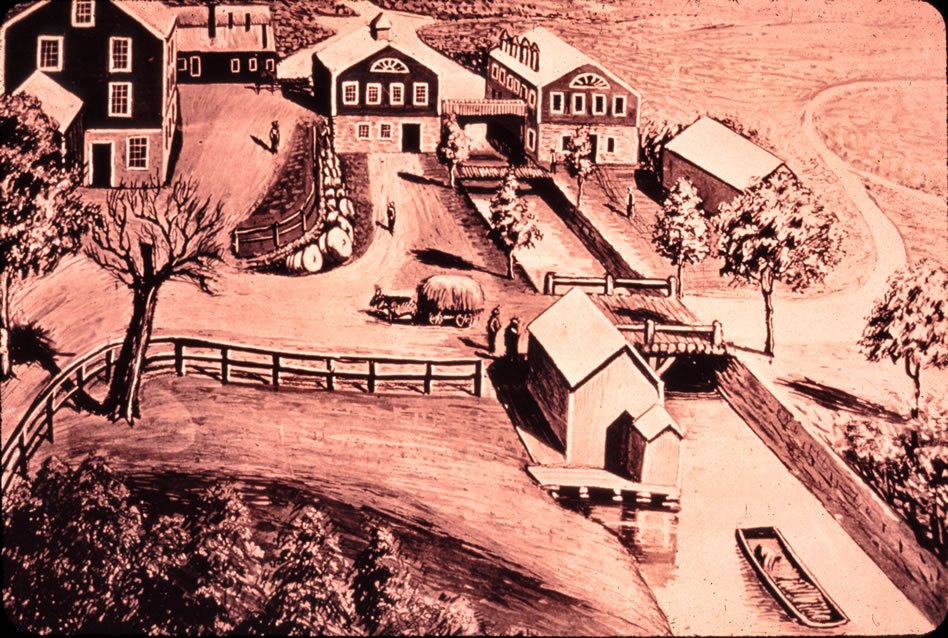
A map of Springfield and some of the Armory Watershops
Since its beginning in 1794, the United States Armory at Springfield
has played an important role in the development of the city of
Springfield. The site, now called Armory Hill, was first used during
the American Revolution to store and repair guns. Later, about
1794, President Washington briefly considered relocating the Federal
Armory across the Connecticut River to Agawam where there was a
better water source for power. The farmers in the town resisted
this unwelcomed change because they possessed some of the best
farmland in the area and did not see the need to introduce manufacturing
into their economy. They also did not want to share their community
with rough-housing “mechanics”. The Federal Government
chose not the push the issue and instead purchased the land in
Springfield that they had been leasing since 1778.
Springfield was an attractive site not just because of the plentiful
skilled labor found in the region but also because it was located
on the young nation’s best highway from Boston to Philadelphia
and on the Connecticut River. Located sixty miles up the river,
the Armory site sat just north of river rapids making it secure
from naval attack. The town of Springfield was also interested
in manufacturing because of its poor farmland. The Federal Government
purchased land for the Armory on top of a hill above Main Street
and along the Mill River for the water-powered Watershops.

An aerial view of the Armory Watershops
When the Armory began producing muskets in 1795, the heavy work
of forging metal and shaping wooden stocks took place at the
Watershops and the lighter assembly work occurred at the Hill Shops.
The Armory soon became the core of Springfield’s emerging
industrial development. Not only did the Armory provide jobs for
Springfield area residents, but it also worked closely with private
manufacturers and merchants in the area. At the beginning of the
nineteenth century, Springfield had about 2500 inhabitants. About
100 of these men worked at the Hill Shops while others worked at
forging and grinding mills located along the Mill River.
The War of 1812 attracted many more skilled and unskilled workmen
to Springfield. When the war ended in 1815, the Armory laid off
many workers leading to an economic depression and even more layoffs
in 1817. This was the beginning of a cycle that would reoccur many
times in Springfield. The vitality of the Armory directly impacted
the economic health of Springfield.

The Upper Water Shops circa 1830s
By 1820, when the population had grown to 6,784, fifty-eight percent
of Springfield’s working population was in manufacturing
and the Armory was the town’s chief industry. Residential
neighborhoods were located on Armory Hill, along the Mill River,
and around Court Square by 1821. The population of Springfield
grew rapidly after the first railroads linked it with Boston and
Albany around 1840. By 1852, the population of Springfield had
reached 12,000 when Massachusetts granted them a city charter.
Springfield Armory’s Superintendent, Major James Ripley,
whose conflicts with Springfield’s residents is discussed
in the previous section, had created an efficient factory between
1843 and 1854. By the Civil War, however, a crew of only barely
two hundred men turned out small numbers of muskets. When the Civil
War began, the Armory needed to quickly ramp up production. The
workforce grew from 200 men to 2,600 men in a few years. During
the war, a quarter of the city’s work force was assisting
with arms production. The Civil War was a great boon to Springfield’s
economy and its population increased as private manufacturers sprung
up around the Armory. |